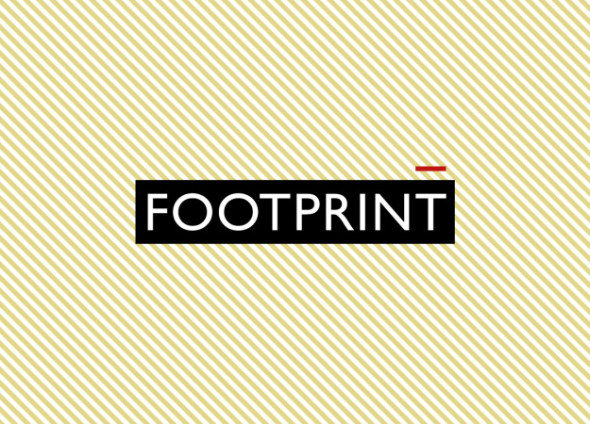Footprint 22 – Exploring Architectural Form: A Configurative Triad

This issue of Footprint aims to explore the discussions that currently gravitate around the question of architectural form, by inviting architects to reflect on the latest developments in the field of formal studies within architectural and urban theory, design, research, and pedagogy.
Footprint #22 aims to collect a comprehensive set of state-of-the-art approaches to the question of architectural and urban form, and thus provide an updated examination of formal, morphological and typological investigations.
As editors, we welcome a broad spectrum of interpretations, ranging from theoretical and practical applications of form-based analyses, to epistemological and pedagogical implementations of these formal analyses in diverse contexts.
Aware of the weight that form-centred theories have had in postmodern architectural research, and in order to establish a historical landmark for this edition, the emergence of neo-rationalism in the early 1960s will serve as a point of departure. However, we deem this a landmark that is meant to be superseded.
The neo-rationalist aim to overcome the shortcomings of modernist functionalism by contesting the idea that a building’s form resulted from its use, certainly marked a shift within architectural theory, and favoured the emergence of a strain of architectural thinking that currently offers multiple and contradictory approaches to the way architectural form is generated, understood, and communicated. Beyond their neo-rationalist predecessors, architects and authors like Peter Eisenman, Fumihiko Maki, Nicolas Bourriaud, Carlos Martí Arís and Antonio Armesto, Mario Carpo, Pier Vittorio Aureli, and Sanford Kwinter, have more recently reclaimed important parts of the form-centred architectural discourse, with diverse intentions, and from different vantage points. Furthermore, multiple lines of inquiry which depart from the question of architectural form, still orient the production of knowledge in universities and institutes throughout the world, far beyond Western Europe, where neo-rationalism originated and thrived.
Designers, scholars, researchers and teachers throughout the globe have found in the definition of a formal basis of architecture a valuable practical and intellectual tool, while morpho-typological approaches are still broadly used in architectural education. Within such a diversified field of studies, form-centred approaches to architecture have been severely criticised, especially for their reductive consideration of matter, with many contemporary theorists asking for a formal theory which resists taxonomies.
With these antecedents in mind, we wish to examine architectural form today, from a threefold perspective. First, we would like to study the way in which form is produced, dealt with, or confronted by contemporary designers. Secondly, we would like to know how architects examine and study form in discursive (i.e communicative, theoretical, historiographical, but also representational) terms. Finally, we would like to evaluate the way in which innovative formal analyses affect architectural form at all scales within the built environment.
Footprint #22 will follow a tripartite trajectory, advancing an understanding of formal studies which transverses ontological, epistemological and onto-epistemological perspectives. These perspectives directly correspond to the notions of morphogenesis, formalism and in-formation.
Following this sequence, from an ontological perspective, morphogenetic studies deal with the processes in which matter actively co-produces its various formal expressions. Synchronously, formal discourse and morpho-typological studies function as an analytical tool for the examination of these processes. Both morphogenetic explorations and formalist approaches, while imperative for any formal study, do not suffice unless complemented with their intensive in-between: in-formation, or the way in which formal discourses and their outcomes influence form itself, and vice versa.
We trust that by interrelating these three approaches, we can contribute to contemporary formal explorations by substituting an object-based approach with one that examines the reciprocity of formal emergence. Emulating Joseph Kosuth’s well-known triptychs, we aim to situate the question of architectural form in our time between a series of interpretations that transcend a supposed autonomy as well as a univocal cultural or epistemological origin.
With these objectives in mind, we encourage various types of contributions. We welcome contributions consisting of full scientific articles that examine formal studies in pedagogy and research, critical reflections on the question of form in contemporary architecture, and theoretical and historiographical approaches that assess the formal discourse of architecture. In addition, we are expecting graphic and/or textually reasoned analyses of projects and buildings which suggest innovations in architectural form. Finally, we invite contributions in the form of review articles that critically reassess key literature related to this topic.
Footprint #22 will be published in Spring 2018.
Authors of full articles (6000-8000 words) are requested to submit their contributions to the editors before 1 May, 2017. Full articles will go through a double blind peer-review process. Review articles (2000–4000 words) and reasoned analyses (2000 words, 2 – 5 images) will be selected by the editors on the basis of a short summary (maximum 500 words) which must also be submitted before 1 May, 2017. All authors should include a short bio (300 words) with their submissions. We ask authors to refer to Footprint Author Guidelines, available at footprint.tudelt.nl.
For submissions and inquiries, please contact editors Stavros Kousoulas and Jorge Mejía Hernández at fp22@footprintjournal.org.
Related Posts
Questo sito usa Akismet per ridurre lo spam. Scopri come i tuoi dati vengono elaborati.






Lascia un commento